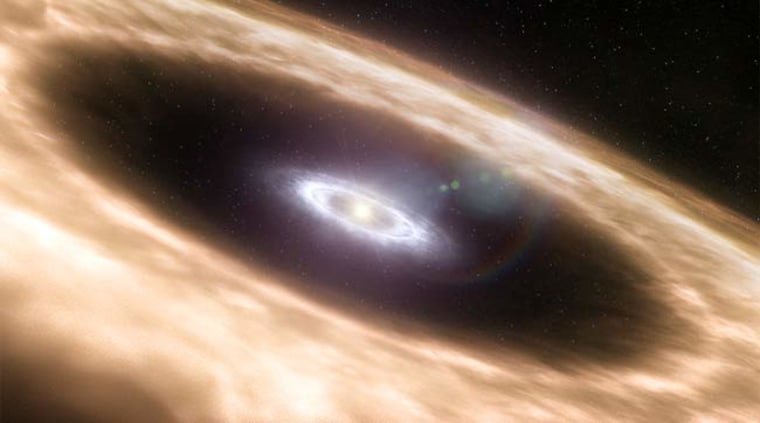If astronomers could look back in time, one thing they'd love to see is our solar system as it formed, 4.6 billion years ago.
Now they can, in a way.
By looking at sun-like stars in their infancy, researchers have used a powerful telescope and a new bag of tricks to peer at planet-formation under way.
The result: Three wildly different setups, suggesting our solar system is perhaps neither unique nor all that strange.
When a star is born, there's often a leftover cloud of gas and dust that flattens out into a thin disk. The material orbits the star in the direction of the star's rotation, looking something like the rings of Saturn. In that disk, which in the case of our solar system would have extended out to and perhaps beyond the orbit of Neptune, knots of material form and some eventually become planets.
Caltech researcher Klaus Pontoppidan and colleagues used the European Southern Observatory's Very Large Telescope to explore such disks around three young sun-like stars.
Slideshow 12 photos
Month in Space: January 2014
"This is like going 4.6 billion years back in time to watch how the planets of our own solar system formed," Pontoppidan said.
In regions where the dust appears to have been cleared out, molecular gas is still highly abundant. This can either mean that the dust has clumped together to form planetary embryos, or that a planet has already formed and is in the process of clearing the gas in the disk.
For one of the stars, SR 21, it's likely that a giant planet orbits at 3.5 times the distance between the Earth and the sun (3.5 astronomical units, or AU). For the second star, HD 135344B, a planet could be orbiting at 10 to 20 AU. The observations of the third star, TW Hydrae, may also require the presence of one or two planets.
"The disks around these three young, sun-like stars are all very different and will most likely result in very different planetary systems," concludes Pontoppidan.
The stars are between 200 and 400 light-years away. Each disk measures roughly 100 AU across.
The researchers did not actually see any planets. Instead they used a technique known as spectro-astrometric imaging to give them a window into the inner regions of the disks where Earth-like planets may be forming. The team could measure distances as small as 0.1 AU and measure the velocity of the gas at the same time. Based on the size and shapes of the gaps, and the movement of the gas, they used planet-formation models to project the presence of alien worlds.

